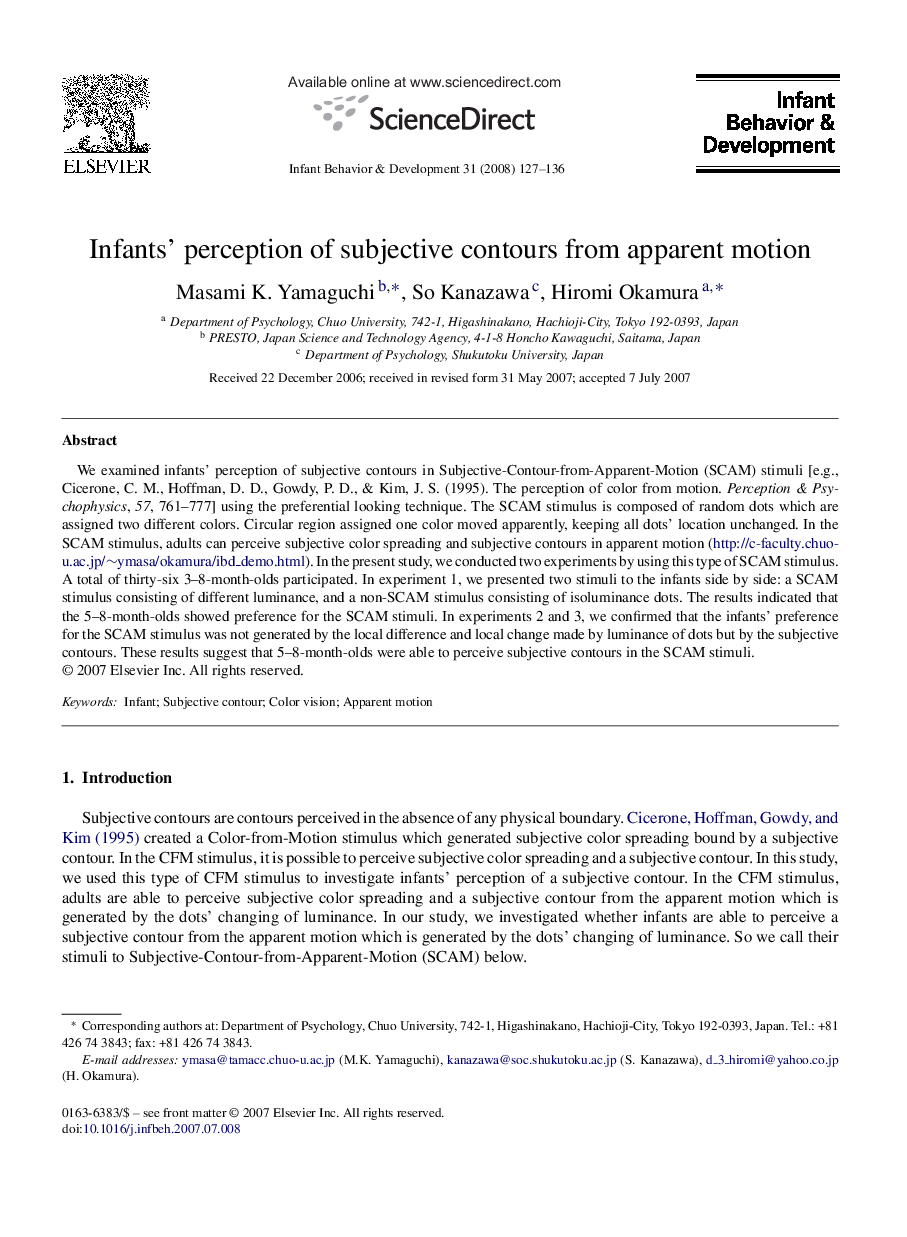| Article ID | Journal | Published Year | Pages | File Type |
|---|---|---|---|---|
| 917548 | Infant Behavior and Development | 2008 | 10 Pages |
We examined infants’ perception of subjective contours in Subjective-Contour-from-Apparent-Motion (SCAM) stimuli [e.g., Cicerone, C. M., Hoffman, D. D., Gowdy, P. D., & Kim, J. S. (1995). The perception of color from motion. Perception & Psychophysics, 57, 761–777] using the preferential looking technique. The SCAM stimulus is composed of random dots which are assigned two different colors. Circular region assigned one color moved apparently, keeping all dots’ location unchanged. In the SCAM stimulus, adults can perceive subjective color spreading and subjective contours in apparent motion (http://c-faculty.chuo-u.ac.jp/∼ymasa/okamura/ibd_demo.html). In the present study, we conducted two experiments by using this type of SCAM stimulus. A total of thirty-six 3–8-month-olds participated. In experiment 1, we presented two stimuli to the infants side by side: a SCAM stimulus consisting of different luminance, and a non-SCAM stimulus consisting of isoluminance dots. The results indicated that the 5–8-month-olds showed preference for the SCAM stimuli. In experiments 2 and 3, we confirmed that the infants’ preference for the SCAM stimulus was not generated by the local difference and local change made by luminance of dots but by the subjective contours. These results suggest that 5–8-month-olds were able to perceive subjective contours in the SCAM stimuli.
